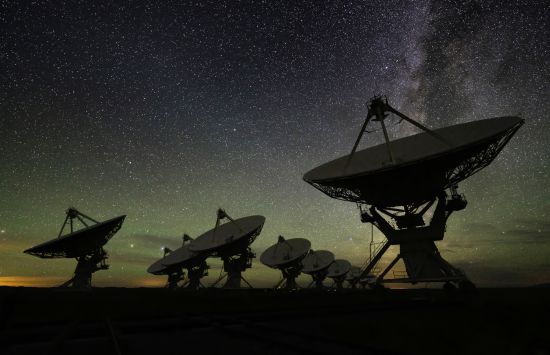NSF National Optical-Infrared Astronomy Research Laboratory (NSF NOIRLab)
NSF NOIRLab is a federally funded research and development center operating multiple ground-based optical and infrared astronomy facilities and telescopes that explore our universe, from asteroids in our own solar system to the enigmatic nature of dark matter and dark energy. It is headquartered in Tucson, Arizona.
NSF NOIRLab facilities:

Cerro Tololo Inter-American Observatory
Located in Chile, this observatory includes the NSF Víctor M. Blanco 4-meter Telescope with the Department of Energy's Dark Energy Camera and hosts multiple other telescopes with U.S. and international partners.

International Gemini Observatory
This observatory consists of two optical/infrared 8-meter telescopes, one in each hemisphere, allowing researchers to examine the entire sky. Gemini North is in the Northern Hemisphere in Hawaii and Gemini South is in the Southern Hemisphere in Chile.

NSF Kitt Peak National Observatory
Located near Tucson, Arizona, the NSF Kitt Peak National Observatory includes the NSF Nicholas U. Mayall 4-meter Telescope with the DOE's Dark Energy Spectroscopic Instrument and the WIYN 3.5-meter Telescope. Kitt Peak also hosts more than a dozen other telescopes and an educational center.

NSF-DOE Vera C. Rubin Observatory
Under construction in Chile, the NSF-DOE Rubin Observatory is funded by NSF and the U.S. Department of Energy's Office of Science. Operated by NSF NOIRLab and DOE's SLAC National Accelerator Laboratory, the observatory will conduct a decade-long survey of the southern sky.

NSF Community Science and Data Center
This center provides user support services, software tools and data management services for NOIRLab facilities and the astronomical sciences community.
NSF National Radio Astronomy Observatory (NSF NRAO)
NSF NRAO is a federally funded research and development center that operates, designs and builds radio telescopes used to study all types of astronomical objects, from planets in our solar system to objects in distant galaxies. It is headquartered in Charlottesville, Virginia.
NSF NRAO facilities:

Atacama Large Millimeter/submillimeter Array (ALMA)
Located high in the Chilean Andes, ALMA consists of 66 high-precision radio telescopes that act as a single powerful radio telescope.

NSF Green Bank Observatory
Home to the largest fully steerable, single-dish radio telescope in the world, this observatory is located in Green Bank, West Virginia, within the National Radio Quiet Zone.

NSF Karl G. Jansky Very Large Array (NSF VLA)
This Y-shaped array consists of 28 25-meter radio telescopes near Socorro, New Mexico. The telescopes are on railroad tracks so they can be repositioned for different types of observations.

NSF Very Long Baseline Array (NSF VLBA)
This network of 10 25-meter radio telescopes is located throughout the continental U.S., Hawaii and the U.S. Virgin Islands.

NSF Central Development Laboratory
This lab develops new technology for the next generation of radio astronomy telescopes and other scientific applications that require unique radio equipment.
NSF National Solar Observatory (NSF NSO)
NSF NSO is a federally funded research and development center operating multiple ground-based telescopes focused on understanding and monitoring all aspects of the sun, both as an astronomical object and as the dominant external influence on Earth. It is headquartered in Boulder, Colorado.
NSF NSO facilities:

NSF Daniel K. Inouye Solar Telescope
This 4-meter solar telescope on Maui is the largest and most advanced solar telescope ever made. The NSF Inouye Solar Telescope's unique instruments allow the solar surface and atmosphere to be explored like never before.

NSF Global Oscillation Network Group (NSF GONG Network)
This worldwide network of six identical telescopes is designed to observe the sun 24/7. The network serves multiple purposes, including space weather prediction.

NSF Synoptic Optical Long-term Investigations of the Sun (NSF SOLIS)
This set of three instruments studies magnetic and non-magnetic solar activity on a continuing basis for several decades to understand the solar activity cycle, sudden energy releases in the solar atmosphere and solar irradiance changes.
NSF Mid-Scale Innovations Program in Astronomical Sciences Solicitations

This program supports astronomical sciences projects that cost up to $30 million in coordination with the NSF-wide Major Research Instrumentation program and Mid-Scale Research Infrastructure-1 program. Projects supported through this program include the Event Horizon Telescope, a network of radio telescopes which produced the first-ever image of a black hole.

